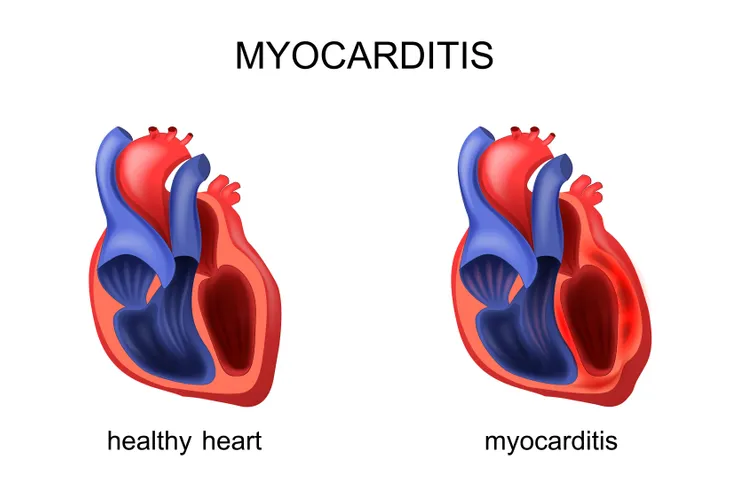- The heart has an important job of pumping blood and sending oxygen and vital nutrients around your body.
- Bradycardia (a slow heart rate) can be normal and healthy but it can also be a sign of an underlying health problem.
- If left untreated, it may lead to life-threatening complications.
- Some individuals may not need treatment while others may need to treat the underlying health problem that’s causing bradycardia. In some cases, a pacemaker may be necessary.
The heart is at the center of your circulation system. It’s responsible for pumping blood around your body, sending oxygen and vital nutrients all over your body. One way you can tell if your heart is functioning properly is by your heart rate, which is the number of times your heart beats per minute.
The American Heart Association (AHA) says an individual’s resting heart rate is typically between 60- and 100-beats per minute (bpm). But when the heart rate falls below 60-bpm this is a sign of bradycardia (slow heart rate). If your heart beats too slowly, your heart may not supply your body with enough blood and if left untreated, it may lead to life-threatening complications. This is why it’s important to get informed. Here’s what you need to know about bradycardia.
Understanding How the Heart Works
It’s important to first have an understanding of how the heart works. Medical News Today explains that the heart consists of four chambers: right atrium, left atrium, right ventricle, and left ventricle. The top two chambers (the atria) receive blood while the bottom two chambers (the ventricles) pump the blood.
This is an important bodily function as blood provides oxygen and nutrients to surrounding tissues and organs, transports antibiotics to fight infections, regulates body temperature, and helps bring waste products to the kidneys and liver to be filtered and cleaned.
Sinus Bradycardia
Sinus bradycardia is a type of slow heart rate that starts in an individual’s sinoatrial (SA) node. Medical News Today says the SA node is a “structure in the top of a person’s right atrium that generates the electrical impulse that starts a heartbeat.”
In this type of bradycardia, the SA node is sending the impulses to begin the heartbeat, but it’s doing so at a slower rate causing the slow heartbeat. The source says sinus bradycardia can develop due to health conditions (such as heart disease), however, it can develop in athletic individuals too.
Junctional Bradycardia
Another type is junctional bradycardia, which involves cardiac rhythms that start from the atrioventricular (AV) node, instead of the SA node. The AV node is located on the bottom right atrium.
Junctional bradycardia may be a sign that the SA node isn’t working properly and is causing the AV node to take over, explains Medical News Today. The source also notes it can develop in athletic individuals, children, and people in deep sleep.
Common Signs and Symptoms of Bradycardia
When your heart rate is too slow, it may be a sign that “not enough oxygen-rich blood is reaching the organs and tissues in your body,” explains Healthline. If this occurs this may wreak havoc and cause symptoms to develop.
The source says many individuals with bradycardia don’t have any noticeable symptoms. That said, some common signs to be on the lookout for include fatigue, weakness, and shortness of breath. Lightheadedness, dizzy spells, as well as fainting (or near fainting), can also be a sign of bradycardia. The source also notes that exercise intolerance (which means you tire quickly when exercising) can also be a sign of slow heart rate.
Signs of a Medical Emergency
If you’re showing signs of bradycardia, book an appointment with your doctor. While it’s not always a cause for concern, a doctor can help determine what is causing your symptoms and if your slow heart rate is a serious health problem.
You should also be on the lookout for signs of a medical emergency. If you develop symptoms such as chest pain, difficulty breathing, pale skin, blurred vision, confusion, or disorientation, then you should seek emergency medical care right away. Near fainting or loss of consciousness is a medical emergency too.
What Causes Bradycardia?
Bradycardia can be caused by a variety of factors. It may be caused by age-related heart tissue damage or it may be caused by damaged tissue from heart disease or a heart attack.
The Mayo Clinic says it can also be caused by a congenital heart defect (a condition present at birth). Other possible causes include myocarditis, a complication of heart surgery, hypothyroidism, and certain medications.
Underlying Problems That May Lead To Bradycardia
Underlying health problems may lead to a slow heart rate too. For example, Healthline says an electrolyte imbalance, specifically an imbalance of potassium or calcium may lead to bradycardia. Hypothyroidism, which is an underactive thyroid gland, can also lead to a slow heart rate.
Finally, the source points out that some sleep conditions, such as obstructive sleep apnea may lead to bradycardia. This is a condition that causes repeated pauses in breathing when you sleep. Treating these underlying problems may help your heart rate return to normal.
Risk Factors
The Mayo Clinic says bradycardia is often associated with heart disease or some type of damage to the heart tissue. Essentially, anything “that increases the risk of heart problems can increase the risk of bradycardia,” explains the source.
With this in mind, factors that may increase your risk include high blood pressure, smoking, and excessive alcohol consumption. Older age, stress, and anxiety may also increase your risk. While some factors like age are not within your control, others are. The source says healthy lifestyle changes can help reduce your risk.
How Is Bradycardia Diagnosed?
If you think you have symptoms of bradycardia, book an appointment with your doctor for a proper diagnosis. Your doctor will likely start by reviewing your medical history and performing a physical exam. Healthline says they’ll measure your vital signs such as blood pressure, respiratory rate, and heart rate.
If your doctor suspects bradycardia, they’ll likely recommend an electrocardiogram (EKG or ECG). This test measures the electrical activity in your heart. To determine the cause your doctor may recommend more testing such as an echocardiogram, Holter monitor, a sleep study, or laboratory tests (such as blood glucose, thyroid function, or electrolyte levels).
Treatment
Healthline says bradycardia that is mild or occasional may not require treatment, however, if it’s constant or severe your doctor will look into treating it. Treatment can vary because the goal of treatment is to treat the underlying cause.
For starters, if an underlying condition is causing it, such as sleep apnea or hypothyroidism, your doctor will work to treat that. If your slow heart rate is a side effect of a medication, your doctor may adjust the dosage or they may change your medication.
The source also says that in some cases, a pacemaker may be necessary. This medical device is surgically implanted and helps your heartbeat at a regular rate and rhythm.
Prevention: Diet and Exercise
The Mayo Clinic says bradycardia isn’t usually preventable, however, “health care providers recommend strategies to reduce the risk of developing heart disease.” One way you can protect your heart health is to maintain a healthy weight, engage in regular exercise, and eat a healthy diet.
The Centers for Disease Control and Prevention (CDC) says, “Each week adults need 150 minutes of moderate-intensity physical activity and 2 days of muscle strengthening activity.” A heart-healthy diet should include fruits, vegetables, lean protein, and whole grains and limit sugar, salt, and fat. Talk to your doctor about what a healthy weight is for you, and what you can start doing to lead a healthy life.
Other Prevention Tips
Along with diet, exercise, and weight management, there are other ways you can help prevent heart disease too. The Mayo Clinic says you should keep your blood pressure and cholesterol levels in check through lifestyle changes and taking your prescribed medication.
Further, if you smoke or drink heavily, it’s time to stop. You should also be mindful of your stress levels as “intense emotions may affect heart rate,” explains the source. Some stress management strategies may include gentle stretching, breathing exercises, meditation, reading, or taking a warm bath. Finally, you should also take care of your heart by attending regular checkups. Regular visits to your doctor can help detect health problems early.
How to Track Your Heart Rate
Monitoring your heart rate from time to time is a good preventative step to take and it’s easy to do! You find out your heart rate by taking your pulse. Medical News Today says to accurately measure your resting heart rate you should take your pulse when you’re lying down or sitting. You should also make sure you feel calm and relaxed.
You can locate your pulse on the side of the neck, on your wrists, inside the elbows, or on the top of the feet. Place two fingers in these areas and find where you can feel your pulse the easiest. Once you find your pulse set a timer for 60-seconds and count the number of beats.
What Is a Healthy Heart Rate?
Most adults will have a resting heart rate between 60- to 100-bpm. A heartbeat lower than 60-bpm indicates bradycardia. However, it doesn’t always mean that you have an underlying health condition. Athletes and some individuals on certain medications can have a lower resting heart rate. Nonetheless, you should still see your doctor to confirm a diagnosis and to find out if there is an underlying cause.
Healthline points out that infants and children have a more rapid heart rate compared to adults. According to the source, a normal resting heart rate for children is:
- 85- to 205-bpm for infants up to 3-months old.
- 100- to 190-bpm for infants 3-months to 2-years old.
- 60- to 140-bpm for children 2- to 10-years old.
- 60- to 100-bpm for children older than 10-years old.

















